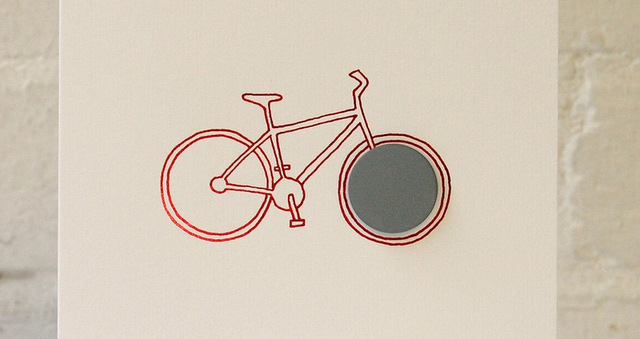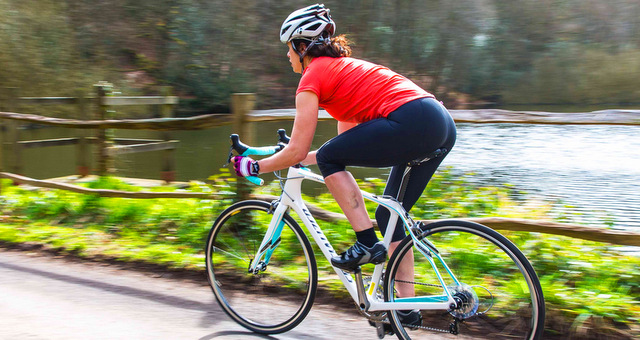Sarah Connolly reports on the Ronde van Vlaanderen, better known as the Tour of Flanders, the race every cyclist wants to win.
It is a race steeped in history, but is equally punishing, exhausting and can even be dangerous. It’s a true Classic; a pinnacle of the season and anyone who finishes knows she’s a tough rider.
For the women, it’s also the third round of the Road World Cup and one of the handful of races they ride on the same roads as the men, in front of the same huge crowds. 2013 was the tenth year the women have been able to race the Ronde van Vlaanderen and everyone was ready.
As you can imagine, it’s a tough course. The first climb, the Molenberg, is 38km, after that there’s a climb or a stretch of cobbles every 10km or so until the Oude Kwaremont at 101km, followed by two other climbs within 10km, finishing on a 16km flat run in to Oudenaarde.
It’s not just the fact that the Molenberg is a cobbled climb with an average grade of 9.8% that makes it a tough first challenge. It’s also a very narrow lane, so there’s a full-on battle to get to the front of the peloton, because everyone knows positioning is the most important skill in a race like this. Riders want to be at the front so they can attack, or keep an eye on their rivals’ attacks, if they’re too far back, other riders or crashes can hold them up. Plus, if an attack goes up the road, that’s it, they’re out of contention. With over 150 riders, everyone can’t be at the front all the time, so it was no wonder there were crashes before they even got to the Molenberg, as riders pushed and shoved one another and got caught up in road furniture.
The race was all about small groups that split and reformed as they sped from one obstacle to the next, shedding riders continually, adding to this were the crashes that split the peloton. At 60km, Susanna Zorzi, a young Italian, racing for Faren-Let’s Go Finland, attacked solo, gaining a minute and twenty seconds. Although more crashes disrupted the chase, she was caught after 20km and then the attacks got serious. Two teams with big ambitions – Rabobank-Liv/Giant and ORICA-AIS – played the classic women’s cycling tactic of sending their tough domestiques, Lucinda Brand and Amanda Spratt, out to attack, forcing the other teams to chase hard. On the approach to the endgame of the Oude Kawremont, there were 50 riders left in the race.
As they approached the climb, the move everyone had been waiting for – Rabobank’s Marianne Vos attacked, but Emma Johansson (ORICA-AIS) and Elisa Longo Borghini (Hitec Products UCK) were ready for her, following her attack and getting away with her. Only Specialized-lululemon’s Ellen van Dijk could react fast enough, bridging across to them, and the four were gone.
These four have been the stars of the early season, with different skill-sets and talents. Johansson, a former Olympic silver medallist and one of the most complete all-rounders in the peloton, has had an incredible run of form, racing seven, very different, races in Europe this season, ending on the podium of every single one of them. This is an incredible record for the 29-year old Swede, but deeply frustrating for her, and she really wants another win.
Longo Borghini was racing this coming off the back of winning last week’s World Cup race, the Trofeo Alfredo Binda. At just 21, she combines racing with university study. Last year, Borghini had a break-through year, ending in third place at the Road World Championships, showing that it was just the beginning of things to come. She brought attack skills and opportunism, hoping it wouldn’t come down to a sprint.
One reason for this was Ellen van Dijk. You might remember the 26-year-old Dutchwoman from the Olympic Road Race, when she lit fireworks under the peloton, attacking over and over, before they’d even got to Box Hill. She’s known as a sprinter and time trial expert, but she’s developing into a contender for the hilly races too, finishing on the podium in the first two World Cup rounds, and winning Le Samyn des Dames.
Then there’s Marianne Vos. Without question, the best rider racing today, male or female, combining talent and tactical skills with a pure love of riding a bike that shines through. She may only be 25, but she already has 10 elite World Champion jerseys to her name – two on the road, two on the track and six in Cyclocross.
In 2013 Vos won the overall UCI Road World Cup and Olympic Road Races, but the Ronde van Vlaanderen is a rare, major title that’s eluded her so far. In 2010 she was second, when Belgian Grace Verbeke attacked solo. In 2011, Vos raced for her team-mate Annemiek van Vleuten’s win, sprinting for third from a small chase group. Last year, in 2012 she couldn’t race as an unlucky attack of ‘flu prevented her from starting. At this point in her career, Vos relishes the challenges, but knew that the other three would not let her have it easily.
The four were off, staying together, despite each rider’s efforts to escape, over the three hills and onto the final finishing kilometres. Behind them, a group had formed, with two Boels-Dolmans super-sprinters Adrie Visser and Lizzie Armitstead plus young talent, Anna van der Breggen (Sengers) doing their best to catch the escapees, while Van Vleuten (Rabobank) and Loes Gunnewijk (ORICA) played wily games to help their team-mates and disrupt the chase.
The front four weren’t content to ride in together, battling all the way to the line, taking every opportunity to try to drop their rivals. Vos got away but was caught, then gained some distance with Johansson, before Longo Borghini and van Dijk regained the front – but finally it came down to a sprint between them – Vos winning, her face full of passion, fire and achievement, Van Dijk roaring to second, and Johansson keeping her run of podium places, with Longo Borghini in fourth. An amazing finale to what was an incredibly difficult race.

The chase group hadn’t managed to catch the four, Annemiek van Vleuten winning the sprint for fifth, 2:37 behind her team-mate and Kirsten Wild of Argos Shimano won the bunch sprint for tenth, plus vital World Cup points, two minutes later. Vos extended her World Cup lead with Van Dijk moving up to second in the rankings.
The next World Cup race is anther Classic, the Flèche Wallonne, on 17th April. Before then, Marianne Vos is trying her hand at some more mountain biking and the women’s peloton head north to the Netherlands, for the Energiewacht Tour. This short, sprint stage race is one of those that is a lot of fun for fans, with daily tv coverage on Dutch channel RTL7 and an excellent race twitter and website – so there’s plenty of action to come. Flanders may be over, but the action definitely continues.






